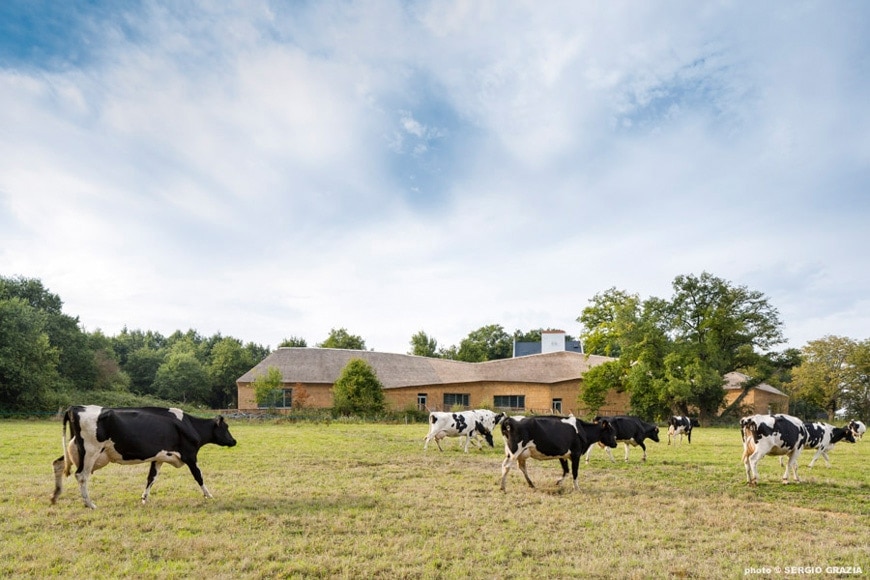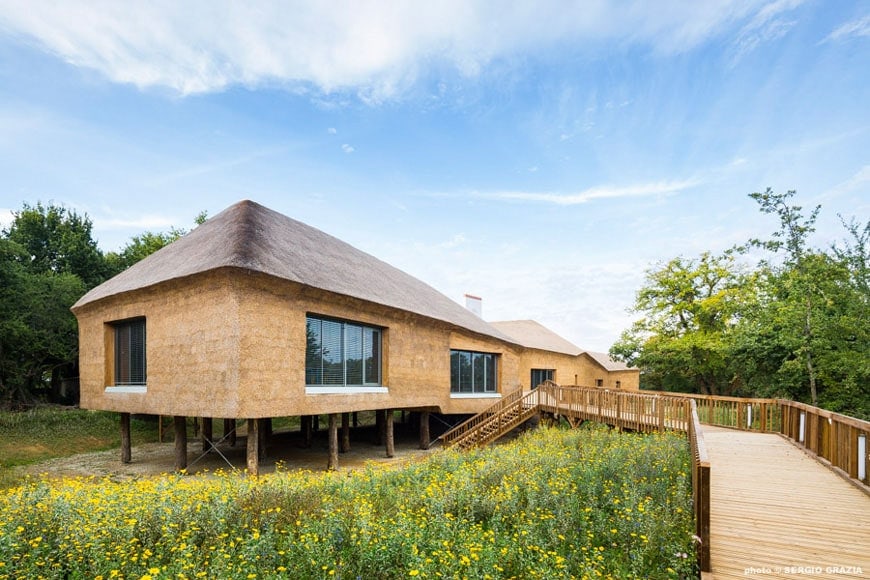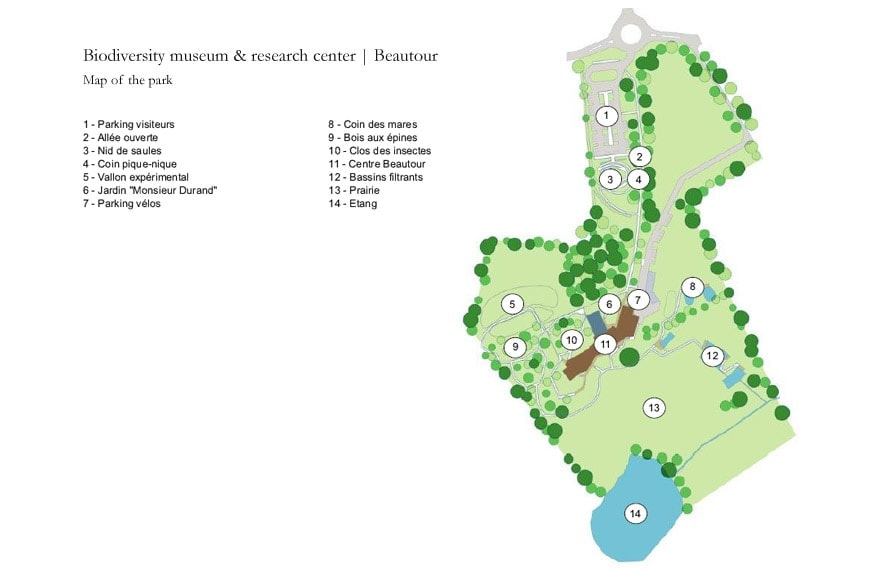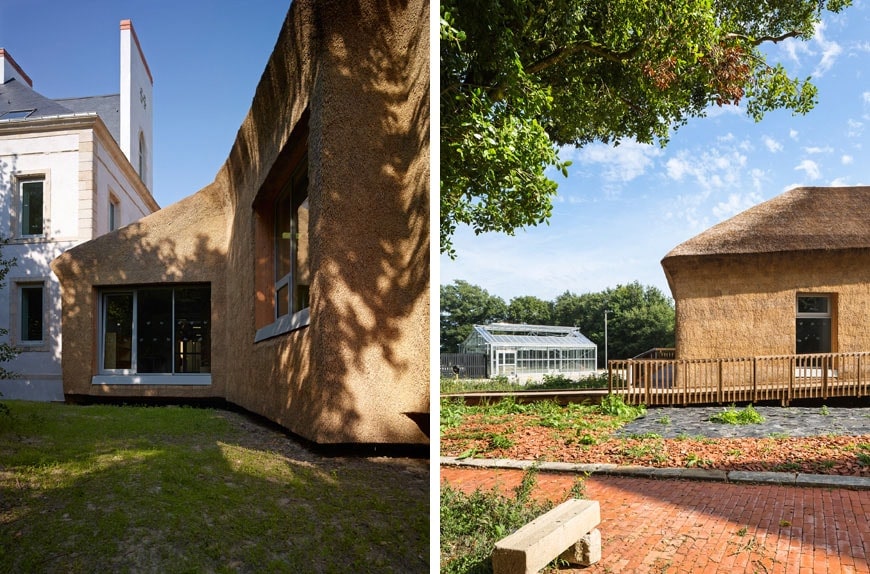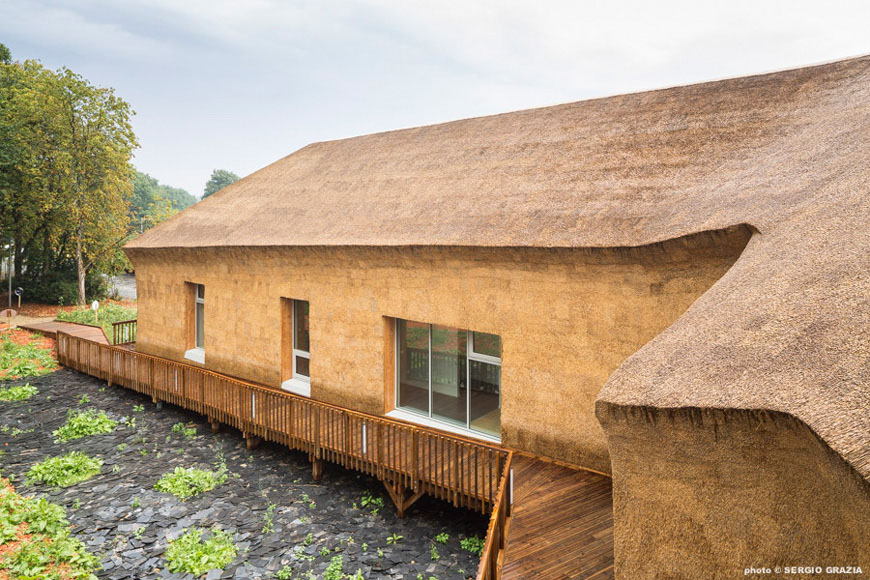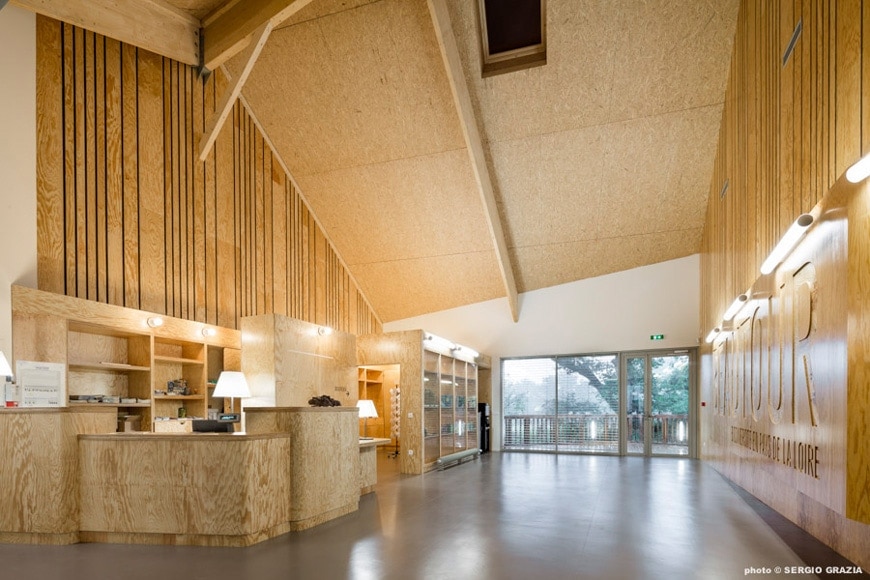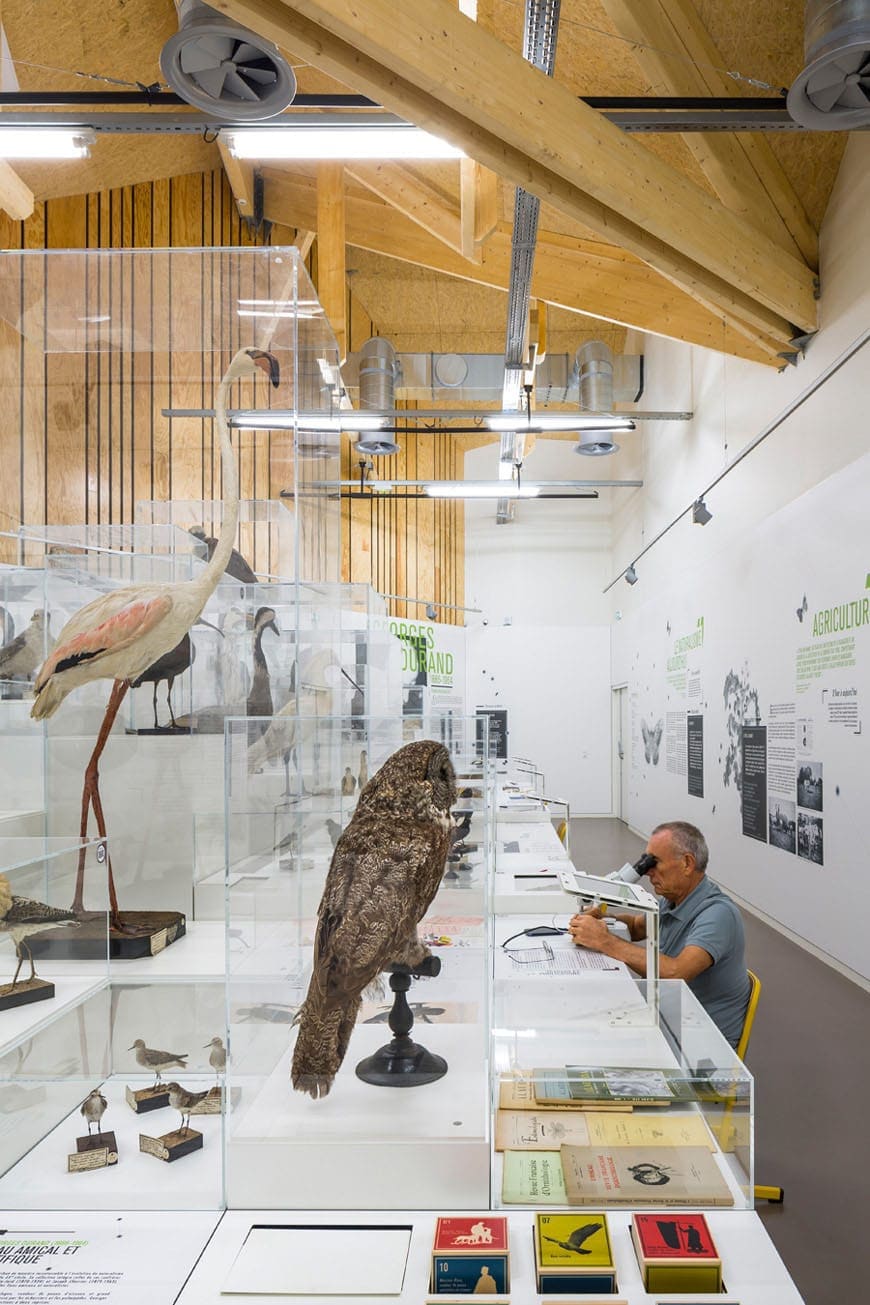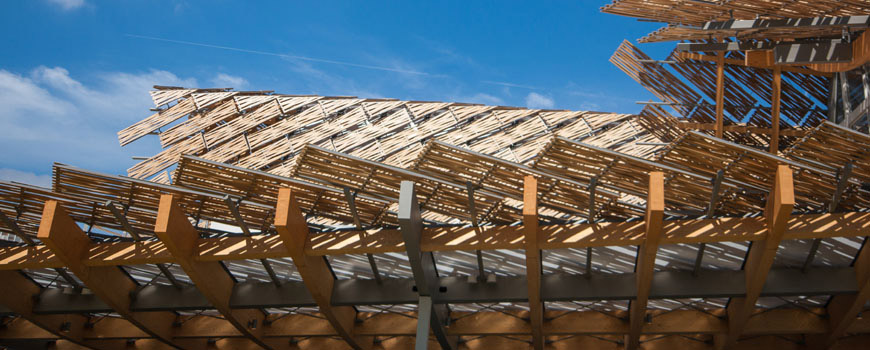Beautour Biodiversity Center and Museum – Guinée*Potin Architects
Le Bourg-sous-la-Roche, Beautour.
Client: Région des Pays de la Loire
Architect in charge: Agence GUINEE*POTIN Architectes
http://www.guineepotin.fr/
Design team: Anne-Flore Guinée et Hervé Potin architectes; Solen Nico chef de projet.
Beautour | Biodiversity center and museum – Guinée * Potin Architects
by Riccardo Bianchini, Inexhibit
Introduction
With the design of the Museum & Biodiversity Research Center in Beautour, by Nantes-based Guinée*Potin architects, we start a coverage cycle dedicated to new projects for biodiversity museums and research centers.
The current trend, especially in central and northern Europe, shows innovative approaches to the design of spaces focused on the preservation of landscapes, deemed highly valuable for environmental and historical reasons.
This is particularly clear in projects for visitors’ centers and visitable research facilities connected to strongly characterized areas and regions. Here architects have to deal, along with functional or aesthetic requirements, with particular local construction techniques as well as with complex relationships between the building, the museum’s mission, and the surrounding environment, since these elements must be all considered fundamental parts of the whole design concept.
Beautour | Museum & Biodiversity Research Center
The Museum & Biodiversity Centre in Beautour is an institution focused on biodiversity located in the Pays de la Loire, not far from the Atlantic coast of France. The Centre lies where once the famous naturalist Georges Durand had a mansion, that still exists. During his life, Durand collected nearly 5,000 birds, 150,000 butterflies and insects, and two herbaria with 4,500 plants; eventually, he donated the collection to the Musée National d’Histoire naturelle in Paris. After Durand’s death in 1964, his mansion was abandoned, and only in 2009 did the regional government start a project to promote and regenerate the site, in June 2013 the Beautour, centre régional de découverte de la biodiversité, opened to the public. The idea was to create a learning and research center focused on biodiversity and environment conservation.
The context
The project envisaged both a landscape redesign on an area of 8 hectares and the realization of a new building, in addition to the old mansion of Durand. The landscape planning, carried out by the practice Guillaume Sevin Paysages, envisaged both the realization of new elements and the conservation of plots already present on site. Thematic gardens, ponds, marshes, trails, meadows, woods, and wild gardens create a complex and diverse set for biodiversity carefully balanced between integral preservation and stronger interventions. The new building design by Guinée*Potin Architectes was also conducted in accordance with the global regeneration and biodiversity fostering constraints.
The architectural project
The requirements for the design of the new extension were thus quite demanding.
At first, the new 1,400-square-meter building had to cope with the existing Durand mansion without visually overwhelming it. To accomplish this aim, Guinée*Potin created a low-rise construction that seems to flow into the site and embrace the old house.
Furthermore, the extension had to be in complete accordance with the surrounding environment and with the center’s mission. Thus the architects conceived what they define as « a piece of built landscape »
The sinuous forms of the building are decisively marked by its thatched skin, so the contemporary use of a traditional local technique provides the center with a strong identity; since it is made with a natural material, the roof covering will transform over time, shifting its colors toward tones of grey with aging and adapting its appearance to seasonal changes.
The building is raised over the ground on thin pillars, both to reduce the impact of the foundation works and to preserve and unveil the natural elements lying below and around it. The structure is made of timber framework and adopted dry construction methods. The addition also strongly relies on passive solar energy techniques and is carefully oriented on a north-south axis also for such purpose. Rainwater collecting, waste-water phytodepuration, and bio-mass heating solutions have also been widely adopted.
The final result is a fascinating ensemble of high-quality appearance, innovation, and sustainability but, perhaps even more important, a building that provides a sense of respect for nature, for the history of the site, and for both who once lived here and who will visit the center from now on.
Museum & Biodiversity Research Center
Client: Région des Pays de la Loire
Architect in charge: Agence GUINEE*POTIN Architectes
Design team: Anne-Flore Guinée et Hervé Potin architectes; Solen Nico chef de projet
Landscape design: Guillaume Sevin Paysages
Scénography: BLOCK Architectes
Graphic design: WARMGREY
Museographic content: Stéphanie VINCENT
Engineering: ISATEG (structure / fluides), ITAC (acoustique)
Area 2057m²- Cost 5 000 000 € HT
Photos by Sergio Grazia, Courtesy of GUINEE*POTIN Architectes
copyright Inexhibit 2025 - ISSN: 2283-5474

